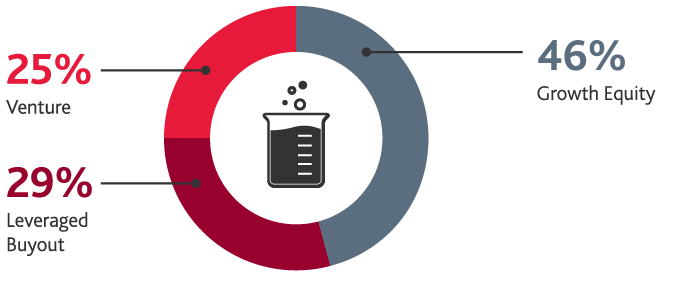We analyzed the data from this subgroup of 104 fund managers and operating partners to identify the top five life sciences PE trends that life sciences leaders need to know:

1. Risk exposure and economic uncertainty threaten deals. Fund managers who invest in life sciences companies indicated their top challenges to closing deals were risk exposure uncovered during due diligence (such as cybersecurity concerns, financial information, and liabilities litigation), and economic uncertainty.
When it comes to risk exposure, there has been an uptick in litigious activity across industries, and life sciences is no exception. Fund managers want documentation on all possible legal exposures and all previously settled lawsuits. The life sciences industry has always been at risk for class-action lawsuits around pharmaceutical products, but it now has to address the increasing possibility of environmental class-action lawsuits as well.
Additionally, economic uncertainty may cause an asset’s value to fluctuate from quarter to quarter, requiring revaluation multiple times resulting in extended negotiations and deal closure delays.

2. ERP integration is the top post-M&A operational challenge. Thirty-six percent of fund managers who invest in life sciences companies say technology and enterprise resource planning software (ERP) integration and optimization is their top post-M&A operational challenge. If private equity funds are conducting tuck-in deals, they may find that the acquiring company uses a different ERP system from the target company. Moving data to a new system can be a huge operational challenge. The acquisition of the new entity may prove too large for either legacy system, necessitating the purchase and implementation of a new ERP system — requiring a significant investment.

3. PE firms are mildly optimistic about life sciences assets. When it comes to deal pricing, 44% of fund managers investing in life sciences expect assets to trade 1-9% higher in the next six months. But fund managers across all industries expect assets to trade at 10-24% higher over the next six months. Again, part of the expectation that asset prices will fluctuate reflects economic uncertainty and the implications of changing valuations.
Life sciences companies were highly valued during the COVID-19 pandemic period, but those valuations have since come down significantly. While the industry is still highly valued, PE leaders do not expect to see for some time the same valuations that were present in 2020-2021. Additionally, companies that focused entirely on COVID-19 vaccines and treatments in 2020 are now struggling to gain traction, and leveraged businesses face high costs of capital due to elevated interest rates.
Finally, as the number of advanced therapies in development, such as cell and gene therapies and mRNA therapies is growing, the FDA is grappling with personnel constraints. This is due in part to difficulty finding qualified professionals who understand how appropriate regulatory guidelines apply to new drug therapies.

4. ESG risk management is integral to deal close. Eighty-three percent of fund managers who invest in life sciences say they have turned down an investment opportunity because of ESG concerns, and 37% have turned down an investment due to the asset’s lack of focus on ESG principles. Companies looking to secure PE investment need to recognize that some PE fund managers will only invest in companies that meet a certain score on an ESG rating platform. Alternatively, funds may ask companies to disclose their decarbonization plans before moving forward with a deal. Life sciences companies should be prepared to disclose their ESG ratings information and/or decarbonization plans when pursuing PE investment.

5. PE funds help life sciences portfolio companies manage cash and solve procurement issues. One of the main ways that private equity firms provide value to their portfolio companies is that they offer guidance on how to improve cash flow, with a common strategy being debt recapitalization.
- Fund managers investing in life sciences say their top value creation lever is cash flow optimization (23%).
- With regards to their operations, 40% of fund managers investing in life sciences say their guidance on procurement is most valuable to their portfolio companies.
For life sciences companies, PE investment typically leads to greater purchasing power when it comes to procurement. PE funds may have vendor agreements that extend discounts on vendor services to portfolio companies and will likely have specific expertise on global supply chain management.









SHARE